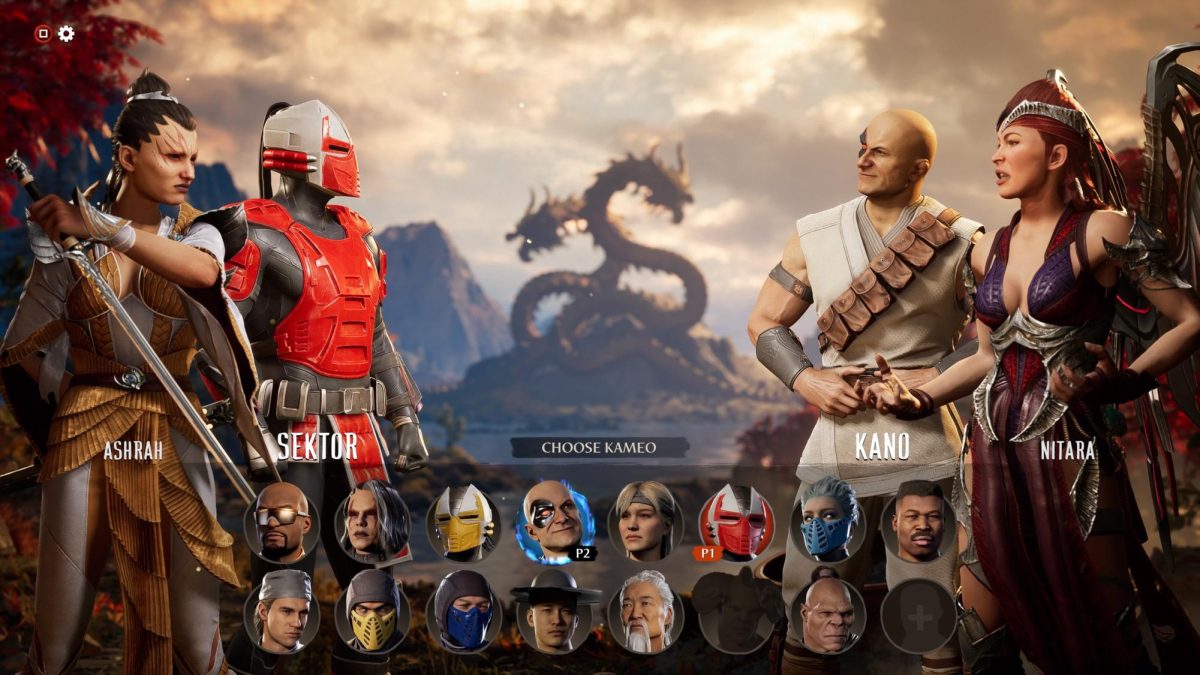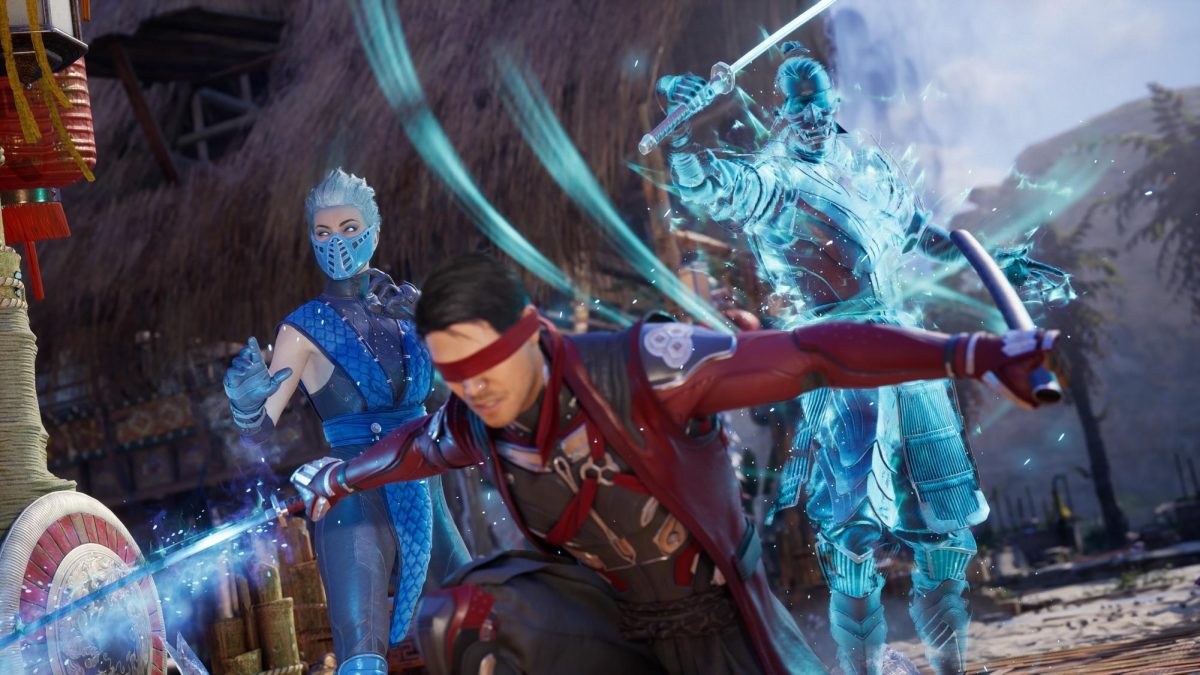I was skeptical of “Mortal Kombat 1” (MK1), Netherrealm Studios’ latest release in the “Mortal Kombat” franchise, because online support for “Mortal Kombat 11” (MK11) ended in July 2021, after only two years, with mixed responses from players. The announcement to end support came after a long period of silence from developers, leaving players surprised by the game’s sudden end.
The main selling point of “MK1” is the new, rebooted story. It’s been completely revamped, with every character serving different roles and the Mortal Kombat main story starting over.
Early gameplay footage and character reveals created excitement among fans, since the game looked like it was going to deviate from “MK11,” which was heavily criticized for having slow gameplay with uninspired combos. “MK1” introduces a revitalized combo system, with the new kameo mechanic adding new life to the game. Kameos are specialized assists that help your main character during combos or to change up gameplans.
Gone are the days of the variation system from “Mortal Kombat X” (MKX) and the custom moves in “MK11.” Instead, “MK1” strips down all of the characters so they have a simple moveset. While characters have smaller movepools, kameos help change the way the game is played.
Apart from that, many characters are given little specialties that make them unique, such as Nitara’s air dashes or Ashrah’s dark stance. But in general, every character in the game has more options for combos and mix-ups, making the game feel a lot more flexible than “MK11.”
The animation and graphics in this game are fantastic on PS5, Xbox Series X and PC. With that said, the Switch version of this game, in short, looks inexcusable for a $70 product. The characters look like they’re from the PS3 era, 17 years ago.
“MK1” brings color to the game, which has been largely absent in recent titles like “MKX” and “MK11.” The game turns up color and visuals significantly, making stages and characters more vibrant and flashy. Even the menu screens and character select screens welcome players with warmer colors.
Cutscenes and moves look as good or even better than its predecessor, and the face models used to capture characters’ expressions keep getting better. Classic characters, like Sub Zero and Scorpion, have new designs, yet still maintain the essence of the original. Additionally, returning characters like Ashrah, who hasn’t appeared in a game for 17 years, are beautifully redesigned.
The story starts off promising, with a strong first nine chapters. Characters like Baraka and Reptile, normally reduced to generic bad guys, are given more depth and presented as tragic characters who face moral dilemmas. However, the story takes a nosedive at the 10th chapter. It abandons the diverse group of characters from the first part in an attempt to tell a much larger narrative. This attempt is largely a failure. Multiple concepts and plot lines cram together, resulting in a story that should have been split into multiple games.
This is where a mixed bag turns into nothing but negatives.
In the three weeks since the game’s release, players have been finding technical issues in all aspects of the game, some of which are intentional.
“Invasions,” this game’s version of “Towers of Time” from “MK11,” feels underbaked. Players face challenges that can quickly grow overwhelming. Opponents have armor so they can’t be hit, modifiers make basic play difficult and the fights feel like a grind. Players should be playing this mode to earn character skins and gear, but it feels like way too much work for too little reward.
Character skins and gear have also taken a big dive in numbers. “MK11” had three gear pieces per character, but “MK1” only has one. And while there are plenty of skins in the game, players have found that very few are actually earnable at this time.
Developers have shortened character intros, only found in single player versus mode or “kasual mode.” They don’t appear in Invasions or online, which feels like a major step down from “MK11,” since intros were another earnable, customization option in that game.
Glitches also appear throughout this game. They include sound randomly cutting out in the middle of play, and more specific character issues, such as weird floating heads appearing during fatalities.
Players also can’t pin moves on the screen during play. Pinning moves has always contributed to players memorizing combos and moves, so not having this ability in this game is a big miss.
Yet another issue with “MK1” is its in-game currency. “MK11” had “time krystals,” which players could buy with real-world money, but at the very minimum, players could at least earn these in-game. Playing five sets a day, completing daily challenges or leveling up one’s profile all granted time krystals as a reward.
“MK1” replaced “time krystals” with “dragon krystals,” which are essentially the same thing. However, dragon krystals prove to be incredibly difficult to earn in this game. The usual methods present in “MK11” aren’t found in this game; in fact, there aren’t any consistent ways to earn them. Leveling up one’s profile is the only way players have found so far, but the game gives you a paltry amount. In-game purchases have always existed, but it’s sad to see “MK1” lean so heavily into them.
Yet another massive issue players have found is they can’t use downloadable content while servers are down. Whether this is intentional is unknown, but this means any time “MK1” servers are down, certain content, from skins to characters, isn’t usable.
Thus, Mortal Kombat 1 feels incomplete. With the lack of earnable rewards, the lackluster offline play and the grind required to actually earn anything, I can’t recommend this game to anyone. The terrific gameplay and graphics aren’t enough to stand out in today’s gaming landscape. Until Netherrealm Studios adds features, fixes bugs and provides more ways to play, this game is not worth buying. Or Playing.




